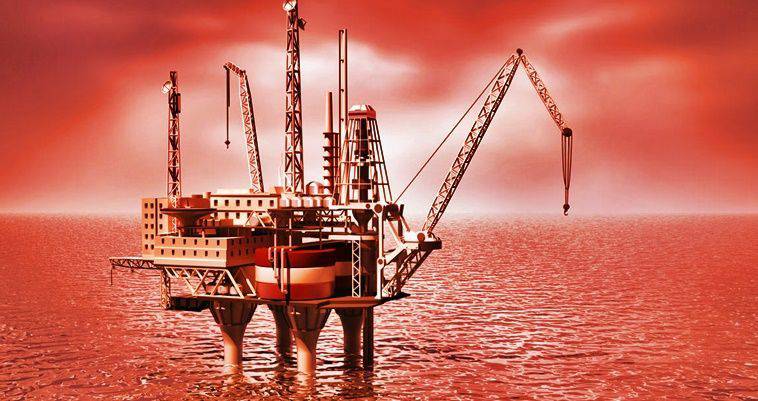Antonis Foskolos: What are the indications that there are giant gas deposits in the Greek EEZ
22/08/2020
After a deliberate break of many years in hydrocarbon exploration, the first quantum leap began, ie the exploration for the exploitation of Greek mineral wealth, to identify and exploit the natural gas deposits located on mainland Greece (area 130,000 sq. Km.) And mainly in the potential Greek EEZ (495,000 sq. km.).
In June 2011, the Deputy Minister of Environment and Energy, Giannis Maniatis, slated a sea area of 220,000 square km for exploration for hydrocarbon exploitation in the Ionian and southern Crete, using geophysical methods. Then Minister Tina Birbili strongly opposed the hydrocarbon exploration in Greece, as did her successor Giorgos Papaconstantinou.
The invitation was answered by eight foreign companies, which would conduct research at their own expense. This event was the first to show that these companies knew that there were hydrocarbons in this area of 220,000 square km. Finally, in March 2013, the Norwegian company PGS was selected to make the two-dimensional geophysical diagrams, but the investigations started at the end of November, due to delays by the then government.
Following the completion of highly successful geophysical surveys at a cost of over $ 100 million, it became known that there were hydrocarbon targets / deposits. This led to the next step, which was the demarcation of 20 sea plots in the Ionian Sea and Crete. The process took another three months, as the procedures had to be approved by the EU.
Possible deposits and plot development
In parallel with the Open Door Policy process, six land (three in Epirus, one in Aetoloakarnania and two in the western Peloponnese) and two offshore plots (one in the Patraikos Gulf and one off Katakolo in the western Peloponnese) were put up for exploration for hydrocarbon exploitation. Before the fall of the Samaras government we had the following offers from two Greek companies (ELPE and Energean) and one from a consortium of three companies (TOTAL, EDISON and ELPE).
ELPE gave offers for sea plot 1, which is north of Corfu, the plot 10 in the gulf of Kyparissia, the deposit of the Gulf of Patras and the land plots of Arta-Preveza. ENERGEAN gave bids for the land plots of Ioannina, Aetoloakarnania and for the two plots in the western Peloponnese and Katakolo.
After the fall of the Samaras government in early 2015, and the rise of the Tsipras government, and essentially until the beginning of 2017, we had a deliberate two-year break in hydrocarbon exploration. The change in the leadership of the Hellenic Hydrocarbon Management Company (EDEY) in combination with the move of the management of ELPE to cooperate with oil giants ExxonMobil and TOTAL for the exploration of hydrocarbons in southern Crete led to the second and more important quantum leap.
Fermentations and collaborations
The consortium of ExxonMobil, TOTAL and ELPE requested two huge plots west and southwest of Crete (each larger than the Peloponnese) to conduct exploration for hydrocarbons, spending the very large amount of 12.5 billion dollars. At the same time EDEY published the reprocessed geophysical data that show that in these two plots there are eight coral reef giant targets with natural gas, deposits of the type “Zor” and “Kalypso”, which are exploitable.
Later, EDEY announced the existence of eight other coral gas targets south of Crete, again of the type of “Zor” and “Kalypso”. These 16 deposits are located in an area of 85,000 square km and have a total area of 3,300 square km, ie an area 33 times larger than the “Zor” deposit of Egypt which has 0.8 trillion cubic meters of natural gas (Figure 1).
The significance of the then EDEY announcements that had gone into detail and the inductive thoughts are the following: We know from scientific publications (Franseen, ER, Esteban, M., Ward, WC, Rouchy, JM. 1996. Models for carbonate stratigraphy from Miocene reef complexes of Mediterranean Regions, in Scholle ed. Special Publication Concepts in Sedimentology and Paleontology, volume 5, pp i-iv, ISBN 1-56576-033-6) that until six million years ago, the Mediterranean Sea was full of coral reefs.
And we know again from scientific publications that when the Mediterranean dried up for a million years, during the Messinian era, the lagoons and the old trenches housed huge amounts of aquatic plants which during their anaerobic decomposition created huge amounts of biogenic natural gas that was deposited in the existing reefs (Figure 2).
So, since the Eratosthenes Abyssal Plain, (Eratosthenes Seamount), created the large deposits “Zor” and “Kalypso” and as long as the “Hellenic trench” and “Ptolemy trough” created the exploitable deposits of natural gas west, south, and south west of Crete and the Pliny and Strabo trenches (image 2), should have filled the reefs south of Kassos, Karpathos, Rhodes, and the Kastellorizo islands complex with natural gas targets / deposits, so EDEY should expand its surveys and east of Ierapetra to the Cypriot EEZ (figure 3) to verify the targets / deposits.
Finally the question arises. Does Greece have more gas fields than many gas exporting countries, including Iran? And does the Eastern Mediterranean basin finally have the largest reserves of hydrocarbons of all the basins in the world? If so, then Greece’s geopolitical position is growing exponentially, because it is becoming not only an energy hub for the transport of hydrocarbons to Europe, but also a potential global energy producer.








